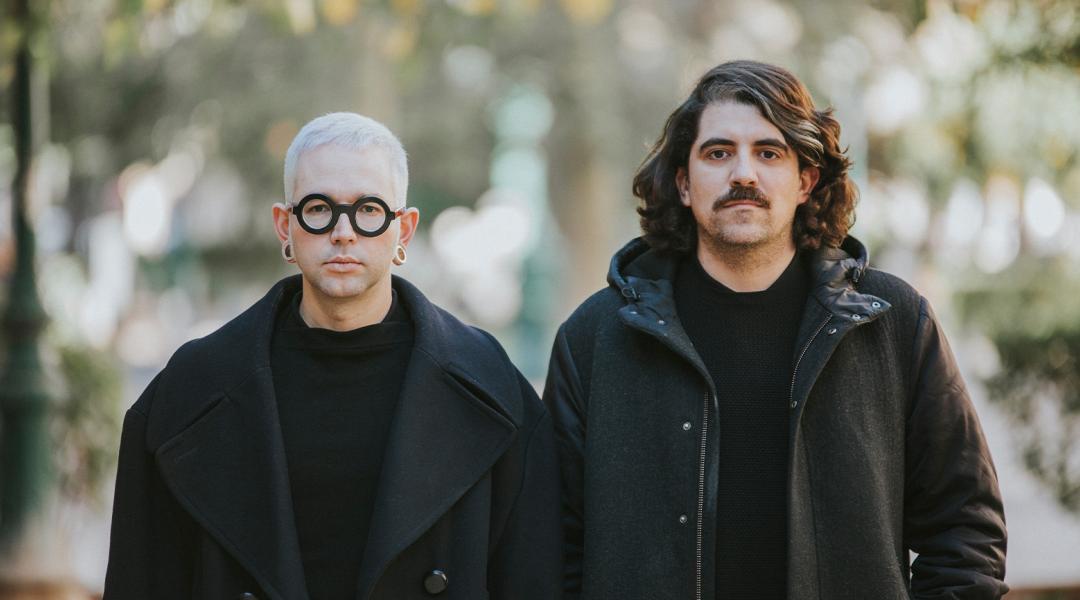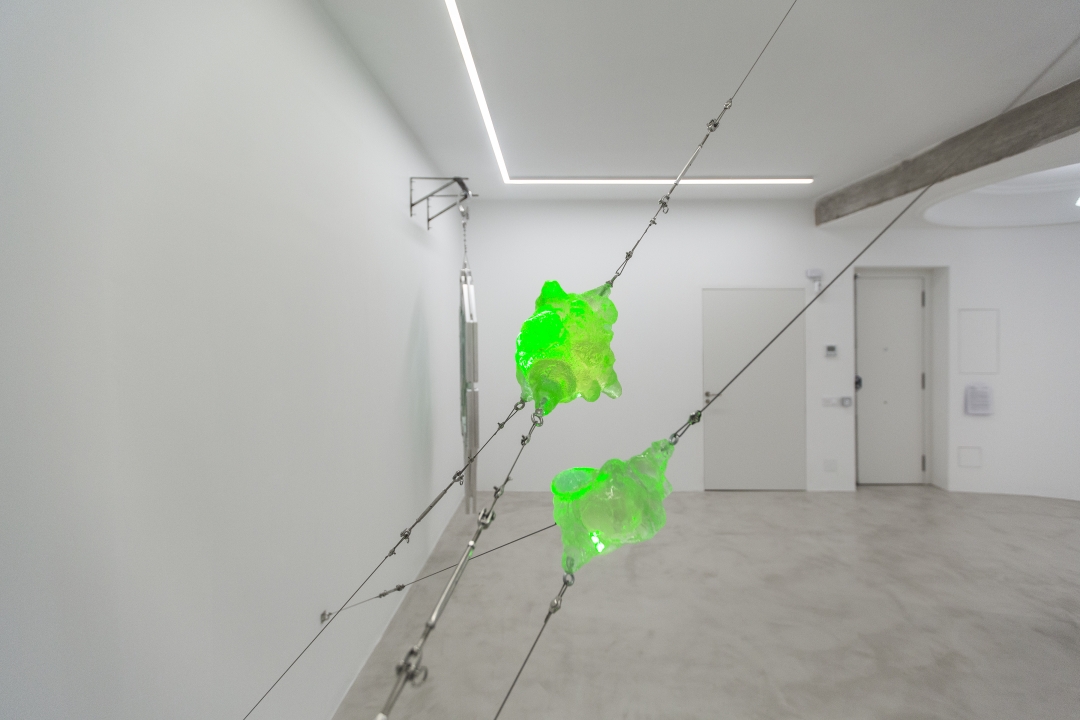Espai Tactel
Art from the Present

Based in Valencia and Barcelona, the Espai Tactel art gallery has worked as a platform for avant-garde contemporary art since 2013. Among their proposals, which in recent years have been showcased in the world’s most important art fairs, are 3D installations, net narrative, and digital art.
The history of Espai Tactel dates back to 2005, when Ismael Chappaz and Juanma Menero launched the Tactelgraphics graphic design studio. Almost fifteen years later, what started as a small project led by two creative and restless minds, has become something much bigger. Today, Espai Tactel is one of the most important art galleries in Valencia, and the first to enter ARCOmadrid in the last fifteen years, with an identity that breaks away from conventional galleries, showcasing proposals whose languages, techniques and topics establish a new paradigm in contemporary artistic creation.
Last year, Espai Tactel expanded horizons with the opening of a new gallery in Barcelona, Espai Tactel. Toormix, allowing them to organize more than ten individual and collective exhibitions a year. They told us about it in person.
How did you get into the artworld?
We both studied Fine Arts. At the beginning we were mostly interested in design and we set up our own studio, Tactelgraphics. Years later, we decided to expand our business by opening an art gallery. Although we didn't have many contacts in the sector, we soon got familiar with the circuit of collectors, curators, institutions, and so on. As in any job, once you start, you get more and more involved.
What were your goals during your first stage as an art gallery?
Art galleries are very personal projects. You develop a style based on your tastes and interests. We believe that contemporary art has an educational and questioning mission. I think this broadly defines the kind of art that we exhibit.
The eclecticism of materials and disciplines is one of your virtues. Is it deliberate?
We have artists like Vicky Uslé, who conveys his personal experiences through painting; Fito Conesa, whose work focuses on queer culture, Raphaël Barontini and Christto & Andrew, who are interested in colonialism. We are aesthetes and put a lot of value on visual part, as long as it’s backed by a discourse and isn’t something frivolous. We take into account the artists’ curriculum, although sometimes we have chosen artists with a short trajectory to positive results. We usually find out very quickly what we like.
Indeed, it seems that there’s a lot of vocation in your proposal, which is especially visible in your close bond with emerging artists.
We hate the word “emerging". It’s a term the system uses to undervalue the work of artists compared to that of more reputed artists. If you’re an emerging artist, it means that, for now, you’re only a promise and that you still have to prove your worth, which is very hard for an artist. Much of contemporary art remains stuck in the 70s and 80s, which has a lot to do with the age of many museum directors and curators. That’s why today’s discourses are usually not paid enough attention.
Although there’re more and more collectors interested in new talents and languages as a long-term investment, your proposal is still risky in comparison.
It’s true that to be in this sector at our age is a bit of a crazy (laughs). We’ve never had any problem when it comes to betting on what we want. For example, we recently appointed the artist Paco Chanivet because we saw his exhibition on cosmic horror at the Miró Foundation. As fans of Lovecraft, we were quite amazed because it was the first time we’d found an artist working on that topic. We’ve also bet on Carlos Sáez, whose work has many references to 90's anime cinema, to films such as Evangelion and Ghost in the Shell. These are topics that are part of our contemporary subculture, to which the establishment is turning its back.
“We hate the word ‘emerging’ because it means that, for now, you are only a promise and that you still have to prove your worth, which is very hard for an artist”
The rise of art galleries in Madrid over the past five years has led many others to move to the area around Doctor Fourquet, creating more competition. Does being in Valencia benefit you?
It neither benefits nor harms us. This is how things came about. We opened the gallery here and, over time, we’ve got stronger and stronger and the other galleries have accepted us. As it happens in Madrid, many art galleries in Valencia are located in the same area, [around calle Carrasquer, in El Carmen]. We came to El Carmen from the Ruzafa neighbourhood and now we are four minutes away from galleries such as espaivisor, The Blink Prohect, and Rosa Santos. When a collector or a consultant visits a gallery and you make it easy for them, they’re more likely to visit yours. In Barcelona, however, we’re far away from where all the main galleries are.
Why do you think your project didn’t quite fit in Ruzafa, an area in full swing now?
Everyone thought Ruzafa was going to undergo a huge transformation. It was the great cultural promise, the place where many artists lived and worked. However, as we grew as a gallery, we distanced ourselves from the neighbourhood and felt less and less understood. We also noticed that, in the seven years we were there, not a single person visited the gallery with the idea of buying something. In our new space in El Carmen we also have our house and a showroom where we offer a different kind of experience for our clients to discover our pieces in another context. It’s not something we have invented ourselves, but it’s not yet as common here as it is in other countries.
When it comes to disseminating a project, an artist or an exhibition, do you still use traditional art channels?
We use social networks a lot, as well as other channels and websites specialized in diffusion and sales. But, in any case, having many likes doesn’t prove the quality of your work. However, Instagram has been very useful to publicize our project. Remember that galleries are private spaces open to all audiences.
This is your fourth year in ARCOmadrid. What does it mean for a young gallery like yours to be present in such a big fair?
If you’re a Spanish contemporary art gallery, you have to be in ARCO because that’s what determines whether you are worth it or not. It's like being featured in the Michelin Guide if you’re a restaurant. If they keep you there, it means that you’re still above others and that you’re offering a high-quality product. The same happens in art. Moreover, ARCO keeps improving, no matter how much some people insist on creating a controversy. But beyond the anecdotal, it’s become more and more polished over the years. However, we should now be thinking about Art Basel as well.

Detail of the exhibition 'Concrete Effect' by Carlos Sáez in Espai Tactel (Valencia). © Nacho López







